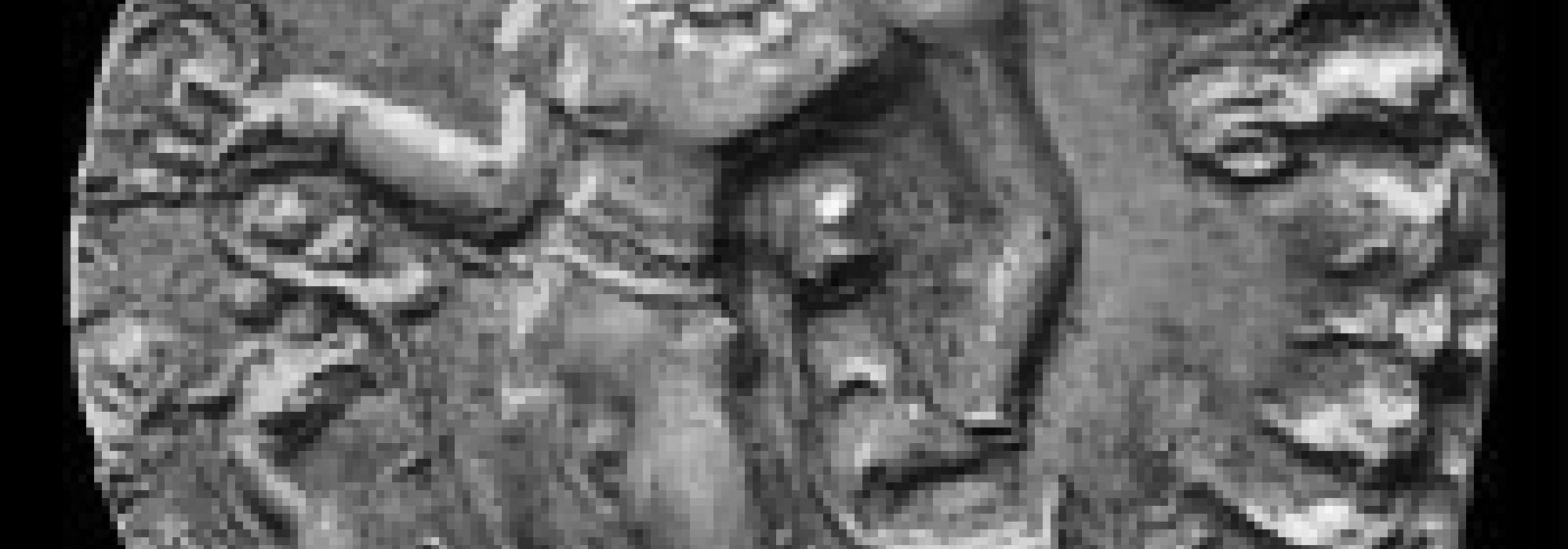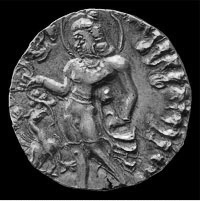Kumaragupta
Some of the so-called historians in an attempt to tarnish the Gupta Empire have made ridiculous attempts claiming “Kumaragupta had absolutely no qualifications. He revolted against his own father,” and spinning such yarns. However the coins that he issued are in themselves the best evidence that show his capability and competence in administration. Indeed the coins of Mohammed bin Tughlaq are the best illustration of how currency should not be. He issued coins made of hide. From this we can infer the extent to which his economy was bankrupt. The economy reached this state after the Mongol raid which emptied his treasury. A Kannada playwright wrote a play on this foolish and barbaric ruler glorifying him as a great ideal and as someone who represented a supernatural symbol. It might be appealing as a play, but when the choice of a subject is itself entangled with prejudice, it will result in greater stupidity. Nagachandra says, “If one composes a work with some non-hero—i.e. some average person—as the protagonist, then the poem or play will not gain importance. On the other hand, if a magnanimous personage like Śrī Rāma is the hero of a play, then the work gets validation and recognition. A golden necklace will adorn the neck but what of a garland made of iron? It is not just the craftsmanship alone that matters; the material is equally important.” (ನಾಯಕನನ್ಯನಾಗೆ ಕೃತಿ ವಿಶ್ರುತಮಾಗದುದಾತ್ತರಾಘವಂ ನಾಯಕನಾಗೆ ವಿಶ್ರುತಮೆನಿಪ್ಪುದು ವಿಸ್ಮಯಕಾರಿಯಲ್ತು ಕಾಲಾಯಸದಿಂ ವಿನಿರ್ಮಿಸಿದ ಕಂಠಿಕೆಕಾಂಚಮಾಲೆಯಂತುಪಾದೇಯಮೆನಿಕ್ಕುಮೇ? – Rāmacandracaritapurāṇa 1.37).
The Prowess of Skandagupta
After Kumaragupta, his son Skandagupta destroyed the Huns in his time. In the words of K M Munshi, in the middle of fourth century CE, there was a disaster that struck, like the great explosion of a volcano, hitherto unseen in human history. Like the saying “bhraṣṭasya kānyā gatiḥ” (What else can be expected from a depraved person?), that kind of barbarity is indeed a lesson taught by oppression. Everywhere they went, the terrorizing roars of the Huns evoked primal fear in the hearts of all the cultured folk. The Huns waged terrifying and destructive wars on all the cultured people and civilizations of the world. And at every opportunity they got, they killed, destroyed, burnt, and engaged in malicious activities, thus displaying their demonic sadism. In Europe, Attila the Hun was the reason for the downfall and destruction of the powerful Roman Empire. Even Constantinople, the former capital of the Roman Empire, trembled due to the barbaric onslaught of the Huns. The Roman Empire established its unchallenged supremacy over the rest of Europe. At that point in time, North and South Americas were unknown. The name Australia did not exist. And as for Antarctica, it was impossible to even hear that name. There were three continents: Asia, Africa, and Europe. The Romans lorded over both Europe and (parts of) Africa. It was against such a formidable force that the Huns waged war and ultimately subdued. Skandagupta was able to destroy the Huns; he ensured that the Huns never set foot in India again. The Huns began invading India around 455 CE. A problem that did not exist during the reign of Chandragupta or Kumaragupta had now raised its ugly head. In the mid-fifth century, Skandagupta remarkably faced the Huns with great courage. If the Huns never returned to India, even by mistake, then it only stands testimony to the immense valour of Skandagupta. The peace and harmony established thus became the nourishment for the rise of the Kanyakubja Empire. We see in the famous Girnar rock inscription at Junagadh the heroic tale of Skandagupta defeating the Huns and emerging victorious. Skandagupta took an oath, “Until I defeat the Huns and drive them away from my country, I will not sleep on a bed, I will not eat on a plate; I will sleep on the floor and I will eat on a leaf.”[1]
With great effort, Skandagupta fought against the barbaric invaders and destroyed them. The reason this has to be reinforced is because the barbarity of the Romans was no less than the Huns; the same with the Turks. Even such barbaric groups were unable to check the onslaught of the Huns. The Huns and the Mongols were so cruel and so hard-hearted that in fact they were ready to completely destroy Islam; the Arabs were on the verge of extinction. But see how the Arabs were able to convert them into the Islamic fold and won over them! That said, these were the people who, by their cruelty, made the early Islamic people tremble. Skandagupta was a person who chased after such people and drove them away; that was his capacity. Later when the Muslims invaded India, Rajputs like Prithviraj Chauhan and Jayachandra forgot all about this valour and that was a disaster. The politics of the Guptas was centered around dharma and not around mata (opinion, sect, religion). The brilliance of their valour was Vedic in nature and they didn’t quarrel about different schools of thought, be it Shaiva, Vaishnava, Dvaita, Advaita, Jaina, or Bauddha. That was the reason they emerged victorious. We can see all those details in history even today.
To be continued Translated by Hari Ravikumar and Sandeep Balakrishna

















































